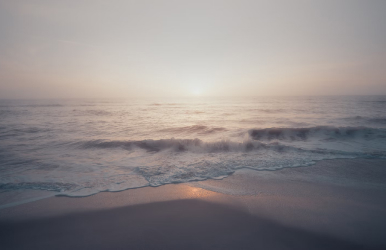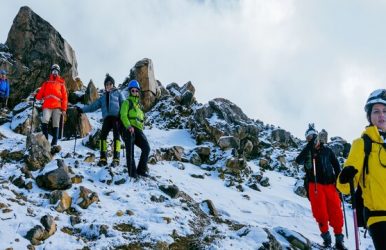Traveling On A Budget: Tips For Affordable Adventures
BY Abdul Aziz Mar 7, 2024
Embarking on a budget-friendly adventure doesn't mean compromising on experiences or settling for less. With strategic planning and savvy choices, you can make the most of your travels without breaking the bank. Here's an in-depth guide on how to travel on a budget, covering essential tips and tricks for securing affordable accommodations, flights, activities, dining, transportation, and more. 1. Strategic Planning for Savings The key to successful budget travel lies in meticulous early preparation. Start your planning well in advance to capitalize on the best deals. Early research and booking of lodgings, flights, and activities is recommended since early bird discounts and promotions are available. By doing so, you not only secure lower prices but also have a more comprehensive range of choices, ensuring that you get the best value for your money. Explore various travel platforms, compare prices, and consider bundling options for additional savings. 2. Timing Matters: Booking on a Budget Understanding the optimal times to book flights and accommodations is crucial for budget-conscious travelers. Airlines and hotels often offer discounted rates during specific periods, such as off-peak seasons or promotional events. Use online tools and platforms to monitor price fluctuations, and aim to make your bookings during periods when prices are typically lower. Flexibility in your trip dates also results in significant savings. Consider scheduling mid-week flights and skipping busy travel days to get better discounts. 3. Avoiding Pricey Guided Tours While guided tours provide convenience, they often come with a hefty price tag. Explore alternative ways to experience your destination without compromising on the richness of your adventure. Utilize local transportation, embark on self-guided walking tours, and research points of interest in advance. Engaging with the local community can uncover hidden gems and unique experiences that might be missed on a standard guided tour. Take advantage of technology, such as travel apps and audio guides, to enhance your self-guided exploration. 4. Embrace Off-Peak Travel Traveling during the off-season offers numerous advantages for budget-conscious explorers. Off-peak periods often translate to lower costs for accommodations, flights, and attractions. Additionally, you'll encounter fewer crowds, allowing for a more immersive and tranquil experience. Research the off-peak seasons for your desired destinations and plan your travels accordingly to maximize savings. Enjoying popular tourist spots without the hustle and bustle not only saves money but also provides a more authentic and serene experience. 5. Smart Accommodation Choices Navigating the world of budget-friendly accommodations requires careful consideration. Beyond traditional hotels, explore options like hostels, guesthouses, and vacation rentals. Websites and apps dedicated to budget travel can help you discover unique lodging options that cater to your preferences and budget. Don't shy away from unconventional choices – they can enhance your travel experience while keeping costs down. Prioritize accommodations that offer kitchen facilities, enabling you to prepare some of your meals and further reducing expenses. For additional insights into making intelligent accommodation choices, consider exploring resources like the headquarters location. It will help find details for Hotels like Marriott, IHG, Hilton, Holiday Inn Express Corporate Office, Phone number, Business Email etc. Such resources provide valuable information about reputable accommodations. 6. Savoring Affordable Local Cuisine Delve into the world of budget-friendly dining, from street food markets to local eateries. One of the joys of travel is experiencing the local cuisine, and you don't have to break the bank to do so. Explore local markets, food stalls, and smaller restaurants where you can sample authentic dishes at a fraction of the cost of upscale establishments. Engage with locals to discover hidden culinary gems and take advantage of happy hour deals for both food and beverages. 7. Budget-Friendly Transportation Hacks Uncover strategies for cost-effective travel, including budget airlines, public transit, and rideshare services. While it might be tempting to rent a car, consider the affordability and convenience of public transportation in many destinations. Budget airlines often offer significantly lower fares, especially when booked in advance. Rideshare services can be more economical than traditional taxis, particularly for short distances. Research transportation options in your destination and plan your itinerary accordingly to minimize expenses. Related: 5 Things You Can Carry For An Amazing Trip On A Budget 8. Maximizing Free and Low-Cost Activities Learn to make the most of free attractions, parks, and cultural events at your destination. Many cities offer a wealth of free activities, from museums with free entry on certain days to outdoor concerts and festivals. Plan your itinerary around these opportunities to enjoy a rich cultural experience without spending a dime. Explore local parks, historical sites, and architectural landmarks that don't require admission fees. Utilize apps and websites that highlight free events happening in the area during your visit. 9. Packing Light for Savings Master the art of packing efficiently to avoid extra baggage fees and streamline your travel experience. Pack adaptable clothing pieces that can be combined and matched to minimize the need for additional packing. Invest in tiny travel-sized toiletries to comply with airline restrictions while saving room. To save money on your trip, take a reusable water bottle and food. Packing light not only saves money but also enhances your mobility and reduces the stress of lugging around heavy baggage. 10. Leveraging Travel Rewards and Loyalty Programs Discover how loyalty programs and travel incentives may drastically reduce your total travel expenditures. Many airlines, hotels, and credit card firms have reward systems that award points or miles for every purchase. These points can be used for reduced or free airfare, lodging, and other travel-related costs. To optimize discounts, research and join up for reward programs that are relevant to your trip plans. Additionally, consider travel credit cards that offer perks such as waived annual fees, travel insurance, and exclusive access to airport lounges. In conclusion, embarking on a budget-friendly adventure requires a combination of careful planning, intelligent choices, and a willingness to explore alternatives. With these tips and tricks, you can enjoy memorable and enriching travel experiences without exceeding your financial limits. Whether you're a seasoned budget traveler or new to the concept, embracing these strategies will not only save you money but also enhance the authenticity of your journey. So, pack your bags, embrace the spirit of adventure, and make the most of every budget-friendly moment on the road. FAQs!!! Q1: Can I still find affordable accommodations if I'm planning a last-minute trip? Ans: While planning is ideal, last-minute travelers can still find budget-friendly accommodations. Look for last-minute deals on hotel booking websites, consider alternative lodging options, and be flexible with your location and amenities preferences. Q2: How can I save on transportation costs during my budget-friendly travels? Ans: To save on transportation, consider using budget airlines, public transit, or rideshare services. Booking in advance, being flexible with travel dates, and exploring local transportation options can significantly reduce your overall transportation expenses. Q3: Are loyalty programs and travel rewards worth the effort? Ans: Yes, loyalty programs and travel rewards can be highly beneficial for budget travelers. Accumulating points or miles through credit card purchases or frequent travel can lead to discounted or free flights, accommodations, and other travel-related perks, making it a valuable investment in the long run. Q4: How do I find budget-friendly dining options while traveling? Ans: To find budget-friendly dining options, explore local markets, street food stalls, and smaller restaurants. Engage with locals for recommendations, take advantage of happy hour deals, and consider preparing simple meals if your accommodation provides kitchen facilities. This way, you can savor local cuisine without overspending. Read Also: How Do I Keep My Child Occupied When Traveling? 9 Tips On How To Make The Most Of Your Wildlife Travel Best Restaurants In Honduras To Visit While Traveling













